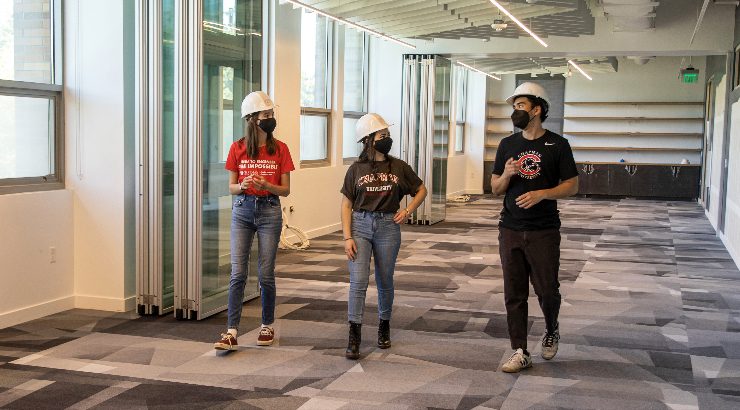Students and faculty in the Fowler School of Engineering are preparing to solve some of society’s biggest problems. They’re bridging disciplines as they design new products and systems.
So why is Dean Andrew Lyon talking about turning things upside down?
“We want to turn over the applecart as we think about how faculty and students interact to help drive our culture of innovation,” Lyon says.
That spirit of rethinking to foster breakthrough learning guides Chapman University planners as they build out the new home of Fowler Engineering.
‘Unprecedented Opportunity’ to Engineer for the Future
The Swenson Family Hall of Engineering, the new state-of-the-art wing in the Keck Center for Science and Engineering, is being outfitted now, with faculty set to move in this summer and the official opening this fall. The efforts will complete the most ambitious building project in Chapman’s history.
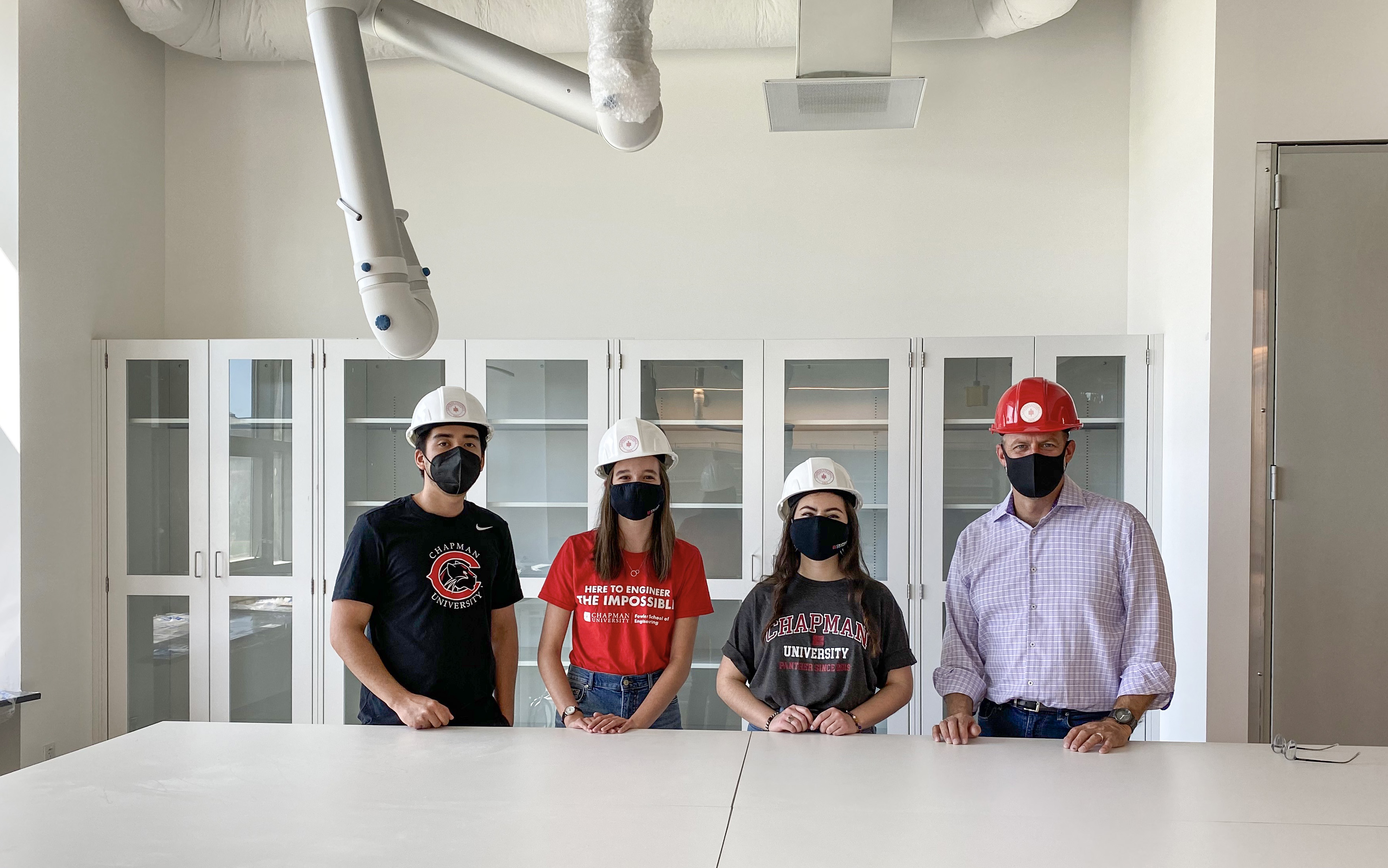
“This is an unprecedented opportunity, so we’re thinking carefully about how students, faculty and staff all interact and how their needs intertwine,” Lyon says.
“From the student perspective, we’re offering an amazing opportunity to get involved in research and immersive learning as early in their experience as possible,” he adds. “So we want to give students a space where they can produce physical objects that speak to realizing this potential.”
From Diode Lasers to Platforms for Deep Learning
Truckloads of mission-critical equipment soon will be going into the new engineering space. Those technological tools include:
- Multi-material 3D printers and bioprinters for biological materials in the Prototyping Lab.
- Enterprise-level Boston Dynamics “Spot” robots for teaching and research in autonomous systems in the Robotics Shop.
- The world’s most powerful platform for deep learning and AI research in the high-performance computing facilities.
- A variety of lasers for research in optics and photonics, with applications ranging from biomedicine to national security.
- Cutting-edge laser etching equipment for rapid prototyping of custom circuit boards.
- Customized stations for measuring the properties and performance of electronics devices.
- A fully appointed metalworking shop, featuring CNC mills, lathes and a variety of other tools.
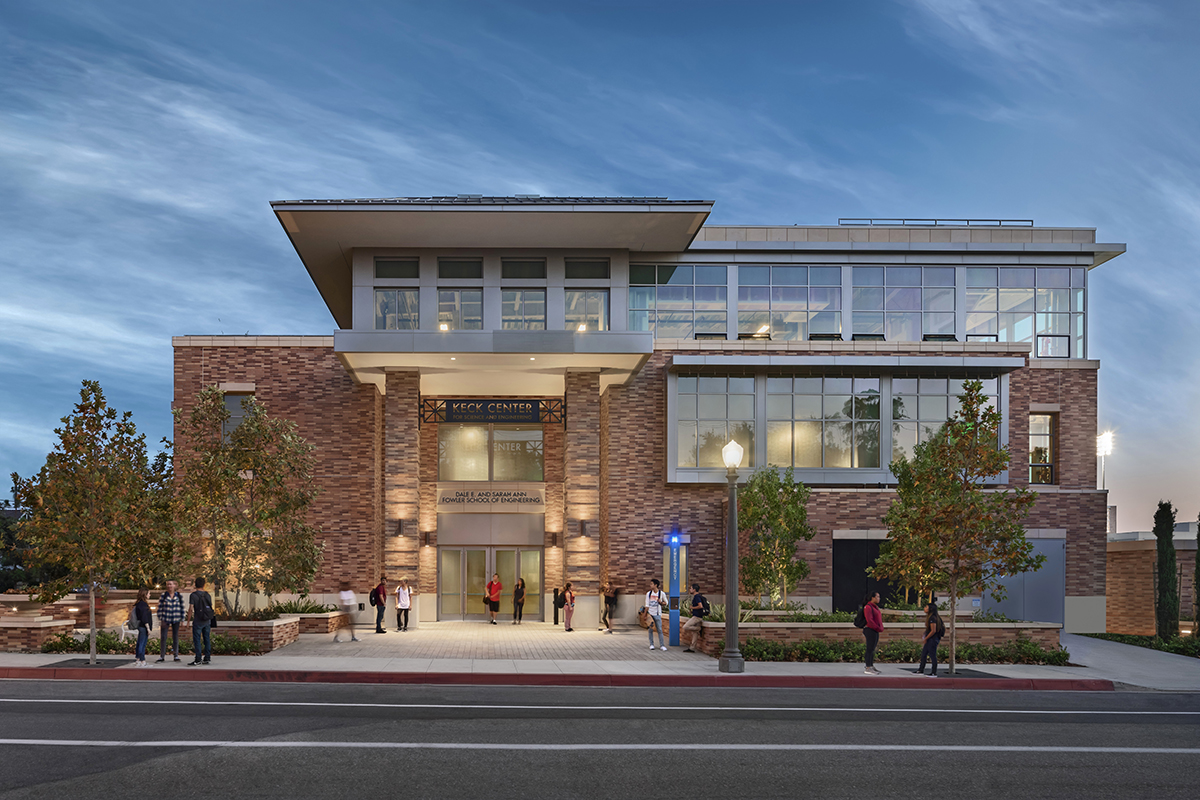
With such deep thought given to equipping the space for research and innovation, it’s no wonder that workspace design extends beyond conventional thinking.
Turning Ideas Into Products That Solve Problems
Don’t look for rows and rows of sterile cubicles, offices and meeting rooms, nor single-purpose labs. What predominates are welcoming spaces for ideation that flow into equally inviting areas for prototyping and manufacturing.
The vision is that electrical engineers excited about hardware will interact with computer scientists excited about software.
“From day one, we push all interests together so we’re cross-fertilizing students’ enthusiasm for different aspects of engineering,” Lyon said. “It’s not just about reading code; it’s not just about wiring circuits. It’s everything that goes into a product. So as you’re thinking about the design of whatever you’re making, you’d better understand who the user is and why they would want or need what you’re making.”
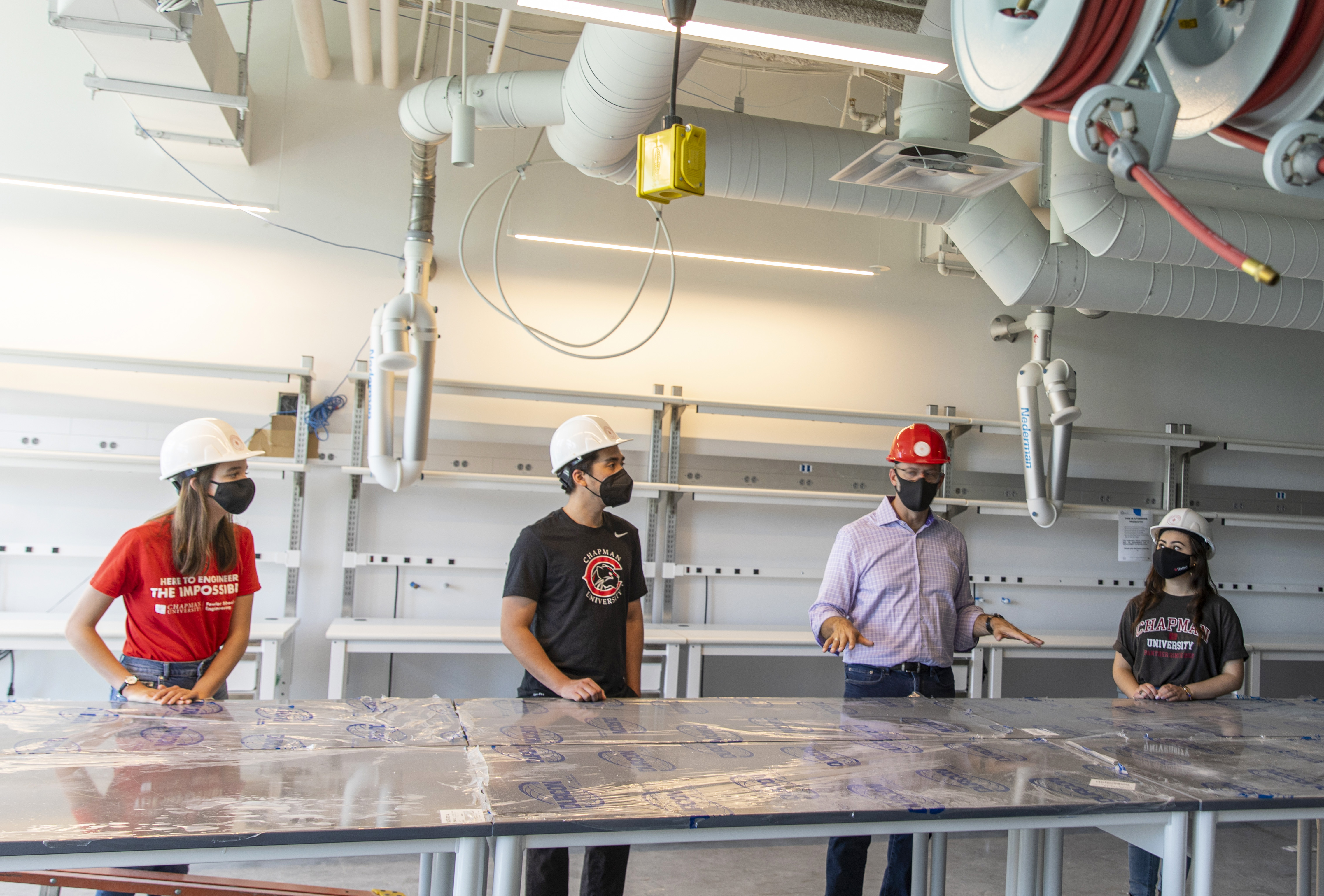
Flexible Research Labs Meet a Range of Needs
Before he joined the Chapman electrical engineering and computer science faculty, Associate Professor Erik Linstead ’01 worked in industry and saw the benefits of an open-office setup. Now as associate dean of academic programs and faculty development for Fowler Engineering, Linstead can’t wait to see what new collaborative projects develop in the Swenson Family Hall of Engineering.
To complement the first-floor layout, designed to replicate the real-world engineering product development cycle, the second-floor research labs can be reconfigured to meet the widest possible needs, he says.
“It departs from this notion that fixed assets get installed and then sit there until something better comes along,” Linstead says.
Eliminating Barriers to Access and Collaboration
So what does this vision for flexibility and innovation look like in practice?
- In the ideation areas, desks are all movable to accommodate groups of all sizes.
- Writable surfaces abound, so ideas get worked through and turned into tangible next steps.
- In the research labs, movable dividers permit resizing of spaces for a wide range of research endeavors.
- Across the hall, research pods can be configured for hyper-specific projects, then reconfigured to make way for what comes next.
“The space can ebb and flow, and we get away from the notion that faculty members have dedicated square footage assigned to them,” Linstead says. “We get to see and talk about each other’s work, and it becomes about how we can support that work.”
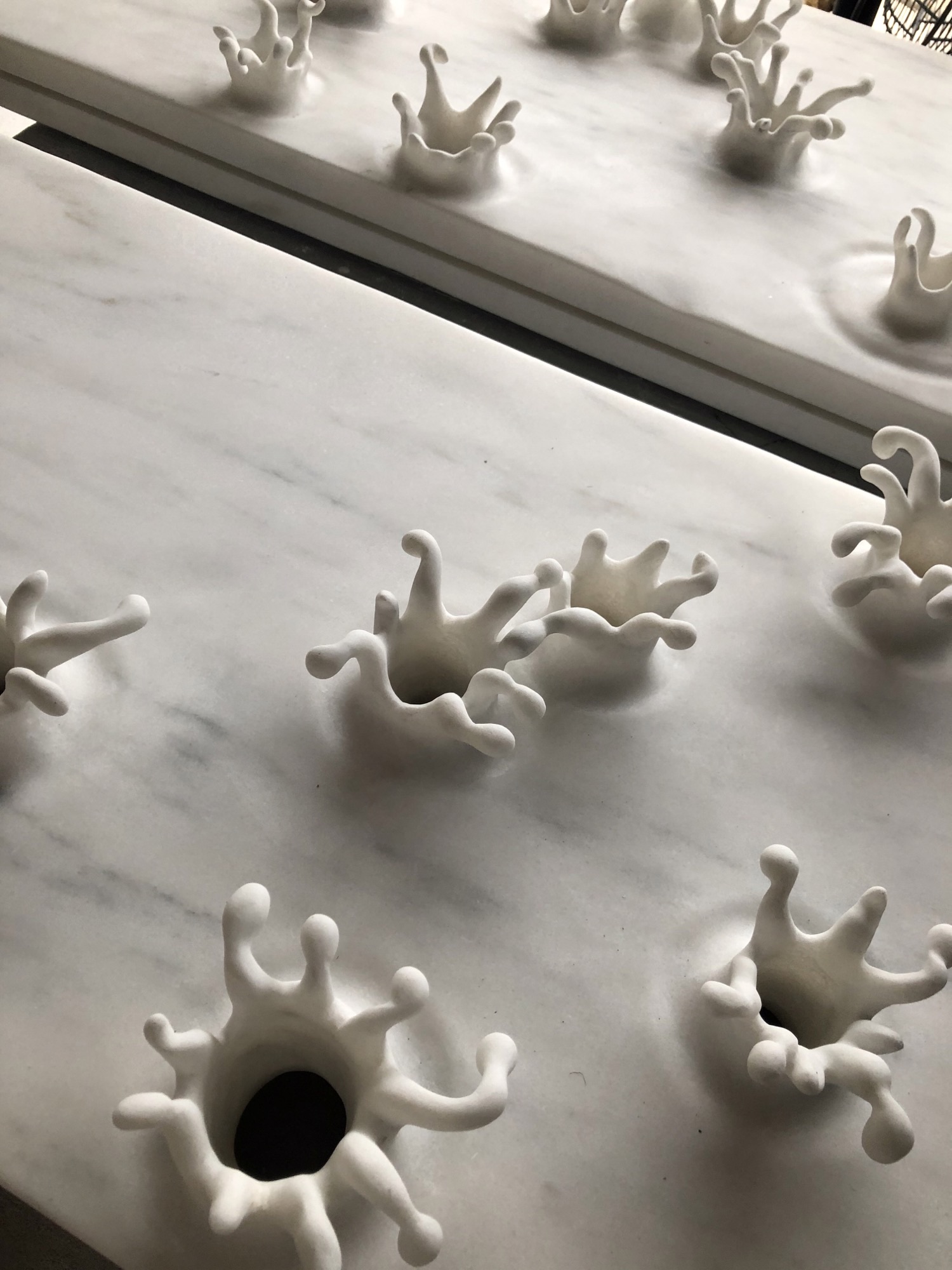
The elimination of barriers to access and collaboration also extends to the Dean’s Suite, adds Jennifer Hunnewell, director of operations for Fowler Engineering.
‘A Lively, Student-Focused Space’
“We want a true open-door policy,” she says. “We want it to be a lively, student-focused space, which is why it’s on the first floor, conveniently located next to the entrance.”
Nearby is the area where students pick up supplies and lab materials, so the natural flow of activity encourages them to interact with Dean Lyon, academic and career counselors and other staff members.
“We want to get rid of any sense of ivory-tower intimidation,” Hunnewell says.
Lyon also wants to jettison the notion that an engineering school’s space is only as good as its cutting-edge equipment. The Swenson Family Hall of Engineering is so equipped, to be sure, but it’s also much more, he says.
“We’ve tried to represent the intellectual process that an engineer needs to go through – the cycle of ideation, prototyping and manufacturing,” Lyon says. “We’re excited to see if students feel like the space is as welcoming and engaging as it’s designed to be.”
Learn More
Learn more about the degrees and programs offered by Fowler Engineering.
